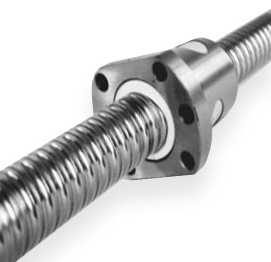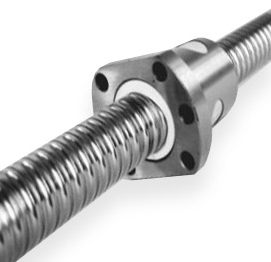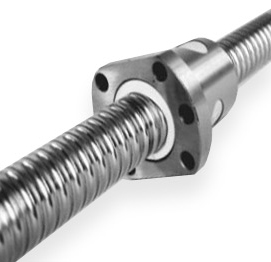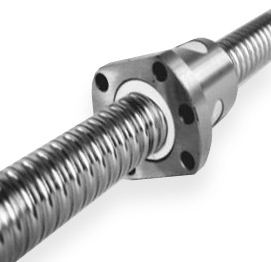Ball Screw and Nut SFU1605 for CNC, 3D printer
|
1,239 UAH
|
Out of stock
|
|
|
|
|
979 UAH
|
Out of stock
|
|
|
|
|
719 UAH
|
Out of stock
|
|
|
What is a Ball Screw for CNC and the SFU1605 Nut?
The SFU1605 (SFU16) ball screw is a component that rotates via a motor and moves the nut up and down along one of the axes in CNC machines, routers, 3D printers, or other equipment.
The screw is installed on the required axis inside the machine frame. It can be mounted either on top or below, depending on the design.
The SFU1605 nut is attached to the moving part of the machine. In CNC applications, this could be the milling head, the Z-axis, or the extruder in a 3D printer. The nut enables the movement of necessary components along the screw as it rotates.
Ball screws and the SFU1605 nut are most commonly used in the vertical Z-axis of 3D printers. The movement of the screw drive is controlled by the electronics and software of the 3D printer. When a 3D printer creates a model, it controls the movement of the SFU1605 nut along the screw to smoothly and precisely adjust the height of the printed layer. This allows for the creation of complex three-dimensional objects layer by layer with a high degree of accuracy.
Material for the SFU1605 Ball Screw
Stainless steel is the most commonly used material for ball screws due to its corrosion resistance and high strength. However, stainless steel is more expensive than carbon steel or aluminum, which makes the cost of the ball screw assembly significantly higher than that of a conventional trapezoidal screw.
Carbon steel also has high strength but offers less corrosion resistance than stainless steel. One of its advantages is its lower cost compared to stainless steel.
Aluminum is a lightweight metal, making it appealing for configurations where low weight of moving components is important. However, it is less strong than stainless steel and is more comparable in strength to carbon steel. It's important to consider the specific alloy, as its strength can vary from one alloy to another.
How to Choose a Ball Screw?
Choosing the SFU1605 ball screw and nut assembly for a 3D printer is crucial for ensuring the accuracy and reliability of the printer's movement.
Manufacturer: Pay attention to the manufacturer of the ball screw assembly. There are budget options from Chinese manufacturers as well as high-end, more expensive products from Japanese manufacturers that offer higher precision.
Precision Classes:
- Standard Precision: Standard precision ball screws (classes C7 to C10) have lower accuracy requirements. These screws are often used in DIY machines, self-assembled 3D printers, and laser cutting machines.
- Precision Ball Screws: Higher precision ball screws (classes C0 to C5) are typically significantly more expensive than C7 to C10 equivalents. They provide increased strength and precision, are usually quieter during operation, and have lower friction due to grinding, which enhances their lifespan and reduces maintenance frequency.
Lead of the Screw: The necessary lead of the ball screw assembly is determined either by technical documentation or by measuring the existing screw and nut for replacement. If possible, check the marking of the ball screw assembly, as this will simplify the selection process.
Documentation: Refer to the manufacturer's documentation and recommendations for selecting the ball screw and nuts for your specific printer model. If you need further assistance, feel free to contact our specialists at 3DTrade, and we will be happy to help you. You can find our contact information on the website.



